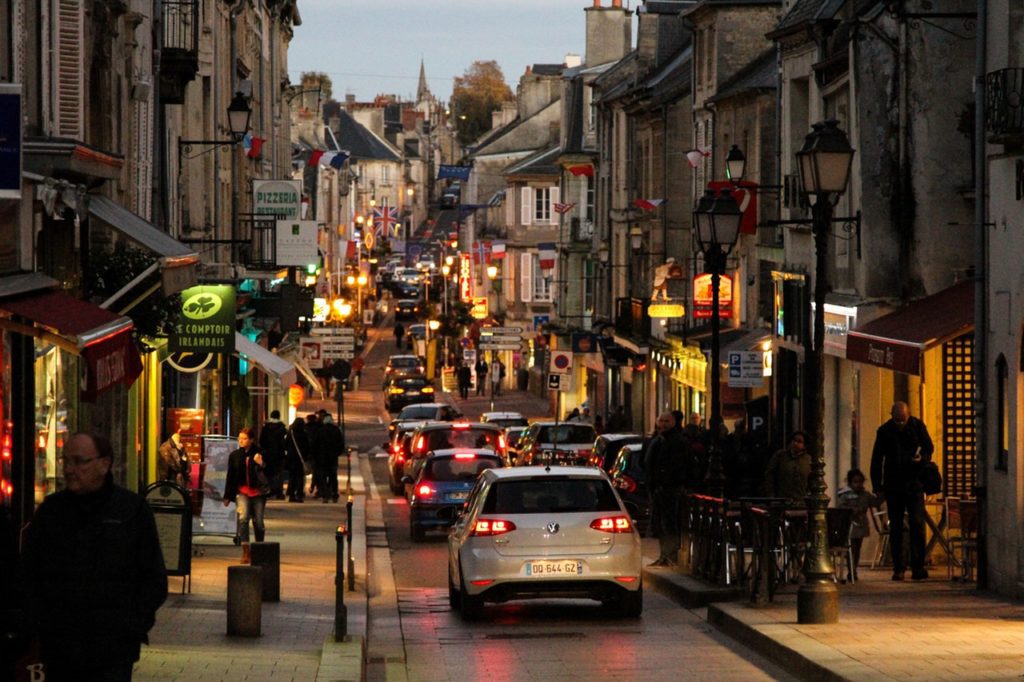On Saturday, July 28, DC Main Streets hosted a summit to provide advanced training for the program’s executive directors, board members, staff, partners and volunteers. Washington now has 16 active “Main Streets,” with more to be funded this fall by the District Department of Small and Local Business Development.
The National Main Street Center was first established by the National Trust for Historic Preservation in 1980, becoming an independent subsidiary in 2013. The aim of the program is to create grassroots, locally grounded organizations of business owners and community members, committed to revitalizing their neighborhood business districts and corridors.
The summit provided a mentor/mentee experience for the newer Main Streets like Georgetown’s — funded in September of 2017 — to learn from the older ones like Shaw’s, funded in May of 2003.
“Having all community members at the table is key,” said Shaw Main Streets Executive Director Alexander Padro. “Listen to what the community wants and make decisions with them about what changes are to be made and how they will deal with them.”
Padro emphasized the need for continual communication; events, such as “A Taste of Shaw”; services, such as the Shaw Clean Team; and constant visibility through social media, newsletters and advertising. “And give out lots of swag with your logo and web address,” he said with a grin.
To some oohs and ahs, Padro showed workshop participants #LoveShaw T-shirts with red smiling lips, colorful magnets with Shaw images and thick newsletters with articles by local writers and ads from local businesses. Most popular with children and adults, according to Padro, was the large format “Shaw Heritage” coloring book, featuring Shaw buildings and historic figures, many African American.
“You need to be the matchmaker between the Main Street and the sponsors of your events, services and organization,” Padro said. “Sponsors have something you need and you have something they need — visibility and community support.” For instance, as he told The Georgetowner: “Dino’s Grotto Italian restaurant chose to move from Cleveland Park to Shaw recently, largely because they knew they could rely on a high level of local promotion and visibility from the Shaw Main Street social media and communications network.”
Georgetown’s Main Street has just begun the process of building a community coalition using the patented “Main Street Approach.” It recently gave out its first round of grants of $3,000 to $5,000 to Georgetown business for projects including exterior and interior renovations and technical assistance. On June 23, the organization hosted its first event: “I Do: A Georgetown Wedding Event.”
Shaw’s impressive incorporation of partners and volunteers may be harder in Georgetown due to the existence of established organizations such as the Citizens Association of Georgetown, the Georgetown Business Improvement District and the Georgetown Business Association, as well as four active friends-of-parks groups. Some are already involved in Main Street-style commercial revitalization. For example, the BID — funded by an obligatory tax on commercial property — oversees a Georgetown Clean Team.
“The idea is not to compete, nor to duplicate services, but to collaborate,” Dionne Baux, the National Main Street Center’s director of urban programs, said at the summit.
The 16 DC Main Streets programs are: Barracks Row Main Street, District
Bridges, Destination Congress Heights, Eastern Market Main Street, Georgetown Main Street, Historic Dupont Circle Main Streets (which is applying for its own BID), H Street Main Street, Lower Georgia Avenue Main Street, Minnesota Avenue Main Street, North Capitol Main Street, Rhode Island Avenue Main Street, Shaw Main Streets, Tenleytown Main Street, Upper 14th Street and Kennedy Street, Van Ness Main Streets and Ward 7 Business Partnership.
The application deadline for eligible D.C.-based nonprofits to operate two new Main Streets, for 14th Street (Wards 1 and 2) and Woodley Park (Ward 3), was Aug. 3.
The DC Main Streets grant award can be renewed annually as long as the grantee continues to meet the National Main Street Center’s standards for accreditation. The initial $175,000 grant may be used to fund up to $55,000 for the executive director’s salary and up to $25,000 for administrative costs, including office rental, equipment and services.
A minimum of $35,000 must be spent for sub-grants to business and property owners; a minimum of $45,000 for other programmatic costs, including professional contracts such as accounting, audit and advertising services; and a minimum of $15,000 for technical assistance in learning the Main Street Approach. Up to $1,000 may be spent on professional dues and membership expenses and up to $2,000 on staff and volunteer travel.
In subsequent years, the Main Streets are expected to raise an increasing proportion of their operating and project budgets from local sources.


